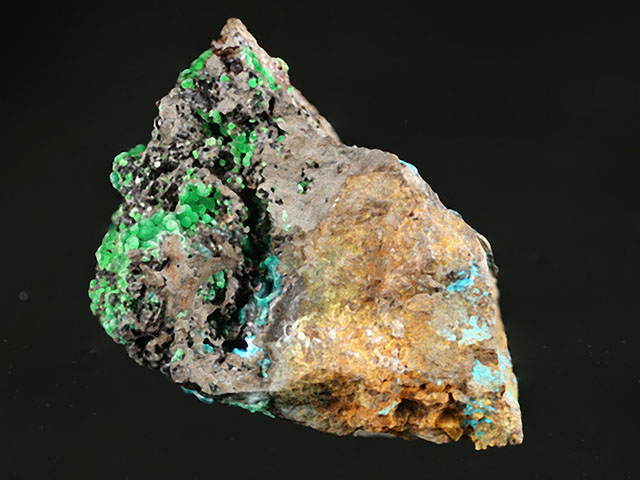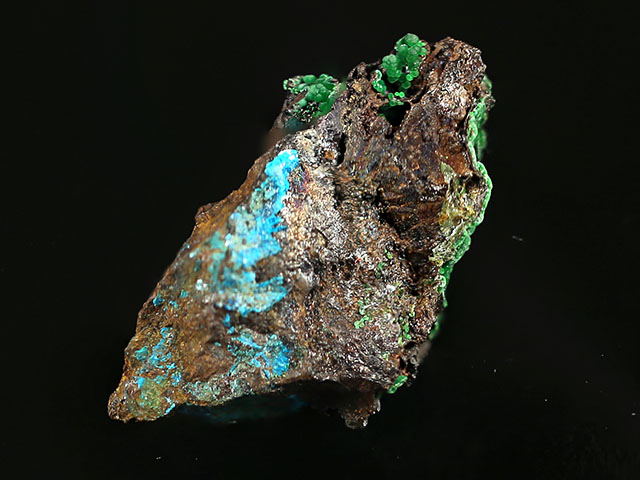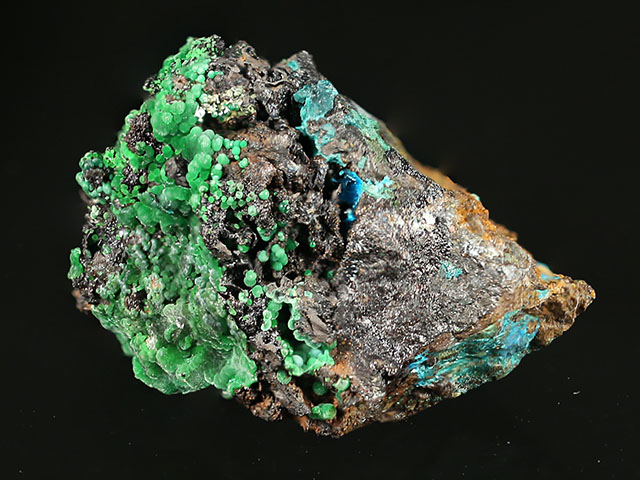Home > American Minerals II – April 7 > MS1551 Lavendulan
Lavendulan - Sold
- Gold Hill
- (south dump)
- Tooele County
- Utah
- U.S.A.
- 3.0 by 2.1 by 1.5 cm – Thumbnail specimen (fits into a 2.5 cm cube)
Lavendulan is a hydrous sodium calcium copper arsenate chloride. Breithaupt (1837) named an amorphous mineral for its color like flowers of Lavandula spica. The 6th edition of Dana's System of Mineralogy (1892) describes lavendulan as an amorphous material from Annaberg, Germany. For a chemically similar mineral from Chile, Goldsmith (1877) applied the name lavendulan to a crystallized blue mineral. The 7th edition of Dana's System of Mineralogy (1951, volume II) lists lavendulan twice for two distinct minerals: (1) that of Breithaupt (1837) and (2) that of Goldsmith (1877). The current definition of lavendulan follows from the X-ray diffraction study of Guillemin (1956), who regarded lavendulan as an arsenate mineral isomorphous with sampleite. Both Ondruš et al. (2006) and Giester et al. (2007) agree on the current definition of the lavendulan: a monoclinic mineral isomorphous with sampleite having the idealized formula NaCaCu5(AsO4)4Cl·5H2O.
Lavendulan here forms sprays of blue blades on compact brown gossan matrix. The lavendulan crystals reach approximately 1 mm, spread out over three sides of the specimen. Associated are apple green botryoidal conichalcite and blue-green botryoidal cornwallite. Jack Parnau (1906-1990) collected this specimen. Parnau's label and a Mineralogical Research Company label acompany this specimen.



